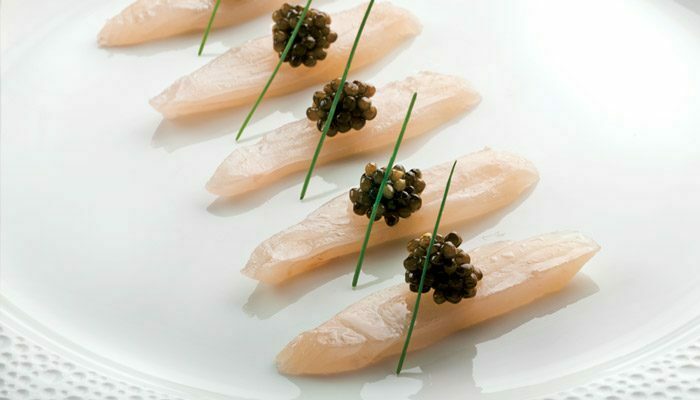Caviar sans Caveat
Caviar used to be relatively simple: the best was Russian or Iranian, wild, and from the beluga, sevruga or osetra species of sturgeon. About 10 years ago, because of overfishing that critically endangered wild sturgeons, it was illegal to import caviar from wild sturgeon to the US.
For some nostalgic connoisseurs, caviar will simply never be what it once was. The upside of that change is that in order to meet demand, quality farmed caviar has risen to meet a bar of excellence and consistency that, in some opinions, exceeds the wild-sourced days of yore. Farming caviar is now the method of production for some of the best caviars in the world, and certainly the best available in the US.

The good
State-of-the-art caviar farms have emerged in the US, Europe, Israel and China. The improvements are chiefly the result of university research. “The sturgeon has been studied intensely in the last 10 years," says Rod Browne Mitchell, the owner of Browne Trading Company, a top caviar supplier in Portland, Maine, “its bio-characteristics, habits and diet. Every farm has its own special diet they feed the fish and that makes a difference."
Other nuances, he says, can be traced to the ripeness of the roe when it is harvested, which is usually a decision made by sight by the farmer after extracting a sample of the roe, and the age of the fish at harvest (the older the better). To hasten maturation, some farmers use injections of natural hormones from male sturgeons, but Mitchell believes better eggs come to those who wait for the sturgeon to mature naturally. The brine mixture and length of curing of the savoury beads determine the final notes of flavour.
The bad
If there is a downside to the proliferation of farmed caviar, it is confusion in a marketplace that has been turned on its head.
“There’s a lot of bastardisation when it comes to caviar," says Ian Purkayastha, owner of Regalis Foods. “The only way you can really know what you’re buying is to look for the Latin name on the label and that isn’t always listed."
The name beluga used to be the hallmark of quality. But beluga (Huso huso) is now banned domestically. Instead, consumers are presented with an array of choices with very little regulation of packaging and labelling. There are just a few main species of sturgeon from which we now source caviar, says Christopher Klapp, the general manager of Californian farmed caviar importer and retailer Petrossian.
“Think of them like wine varietals," he says. The best-known of these is osetra, which is farmed all over the world, “but sometimes domestically farmed white sturgeon is mislabelled as osetra".
The ugly
Many labels do not provide accurate information about region of origin or species. Paddlefish roe is often marketed as caviar, but because the fish is not a sturgeon it does not produce true caviar. Ideally, consumers should look for the Latin name of the sturgeon species, which begins with either Huso or Acipenser. Purkayastha recommends being wary of any odd-sounding ingredient on the label. “The only ingredients that should be listed are fish roe and salt," he says.
While there are standards for determining quality with regard to flavour, colour and texture, personal preference plays a role in deciding which kind of caviar gets the highest marks. Of the four main caviar-producing sturgeons (and two popular hybrids), there is no clear consensus about which is best. Some connoisseurs look askance at caviar farmed in China; others believe that kaluga, farmed exclusively in China, is the closest thing on the market to beluga.
Unfortunately, pure kaluga, like its cousin beluga, is illegal to import. All “kaluga" caviar sold in the US is actually a kaluga hybrid. Siberian sturgeon is growing in supply and popularity, in part because it takes only five years for the fish to reach optimal age for farmed caviar harvest (compared with the 12 or more necessary for other varieties), but it remains less prized than osetra or white sturgeon. Some connoisseurs place the greatest value on osetra farmed in Europe. Mitchell extolls the virtues of the osetra from Royal Belgian Caviar, in particular, because the farm allows its fish to reach 12 to 15 years old before the caviar is harvested, and it has an on-site expert in fish food. The colour of the caviar is a light brown to golden yellow, and its taste has a clean salinity.











